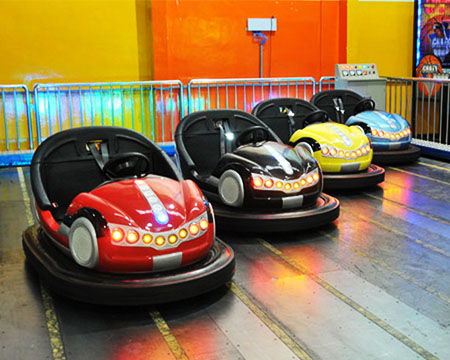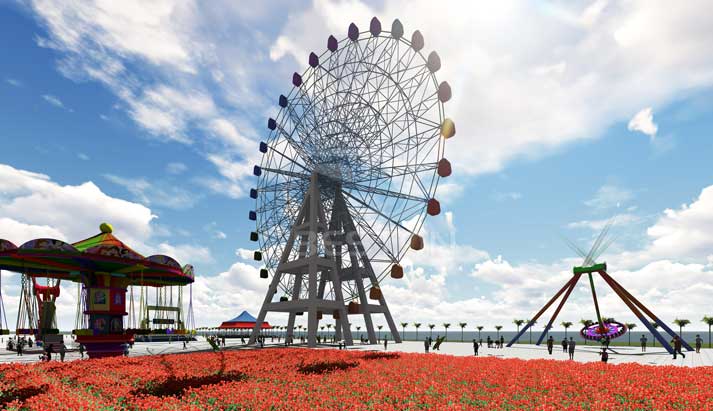Why a Drop Tower Matters in Your Attraction Mix
Drop towers are marquee attractions that deliver a visceral free-fall sensation and strong visual presence. They often play the same role in a park as a pirate ship ride (аттракцион пиратский корабль) or a looping coaster: a focal point that drives ticket sales and repeat visits. Choosing the right procurement route—new or used—affects upfront budget, guest perception, and long-term operational cost.
Benefits of Buying a Brand-New Drop Tower
State-of-the-Art Safety and Monitoring
New towers typically ship with the latest safety systems: magnetic or eddy-current braking, digital diagnostics, modern restraints, and redundant locking systems. These features reduce operational risk and usually translate to fewer unscheduled shutdowns.

Longer Manufacturer Support Window
Manufacturers frequently include multi-year warranties, training packages, and spare-parts guarantees with new units. That makes budgeting easier and shortens time-to-repair compared with sourcing parts for an older model.
Marketing and Guest Appeal
An opening campaign for a brand-new attraction can generate publicity and social-media traction. For parks seeking to attract thrill-seekers, a new drop tower ride (аттракцион башня) often reads as a major investment in estate quality and guest experience.
Why Operators Choose Used Drop Tower Rides
Lower Upfront Cost
Used towers can cost significantly less than new models—often a fraction of the original price—making them attractive to seasonal operators, fairs, and smaller parks that need to expand quickly without large capital outlays.
Shorter Lead Times
Pre-owned rides (аттракционы для детей) can typically be shipped and installed faster because manufacturing lead times are eliminated. If you need an attraction before peak season, a used purchase speeds up delivery.
Refurbishment Opportunities
Many parks choose to refurbish used towers—applying new paint, LED lighting, and updated control systems—to achieve a modern appearance at reduced cost. This approach blends cost savings with fresh guest appeal.
Key Risks When Buying Pre-Owned
Hidden Maintenance Liabilities
Used units may harbor worn components, corrosion, or obsolete parts that are hard to replace. These factors can escalate maintenance budgets and cause longer downtime than expected. Requesting full maintenance histories and conducting a professional inspection before purchase is essential.
Regulatory and Compliance Upgrades
Safety codes evolve. An older tower may require retrofits to meet local regulations—upgrades that can erase the savings from the lower purchase price.
No or Limited Warranty
Used equipment is commonly sold “as is.” Without warranty support, the buyer absorbs the full cost of repairs and liability issues that arise post-sale.
Practical Decision Factors
When deciding between new and used, assess these core areas:
- Available capital: Are you prioritizing short-term cashflow or long-term reliability?
- Guest profile: Does your audience demand the latest thrill ride (аттракцион экстрим) technologies, or will a refurbished classic satisfy them?
- Maintenance capacity: Do you have skilled technicians and budget for ongoing upkeep?
- Timeline: Is fast installation more valuable than a custom-built new attraction?
Comparison Table: New vs. Used Drop Tower
| Aspect | New Drop Tower | Used Drop Tower |
|---|---|---|
| Initial Cost | High — full manufacturer MSRP | Lower — resale or liquidation pricing |
| Warranty & Support | Comprehensive warranty, training, spare parts | Limited or none; buyer arranges support |
| Safety Features | Latest systems and compliance | May need retrofits to update |
| Time to Install | Longer (manufacturing + shipping) | Shorter (already built/disassembled) |
| Long-Term Cost | Lower unexpected repairs initially | Potentially higher maintenance spend |
Practical Steps Before Purchase
- Obtain at least three quotes and compare inclusions (installation, training, parts).
- Request maintenance logs, NDT or inspection reports, and any incident history for used units.
- Have an independent engineer inspect the structural and braking systems.
- Factor in operator training, spare parts inventory and local regulatory approvals.


